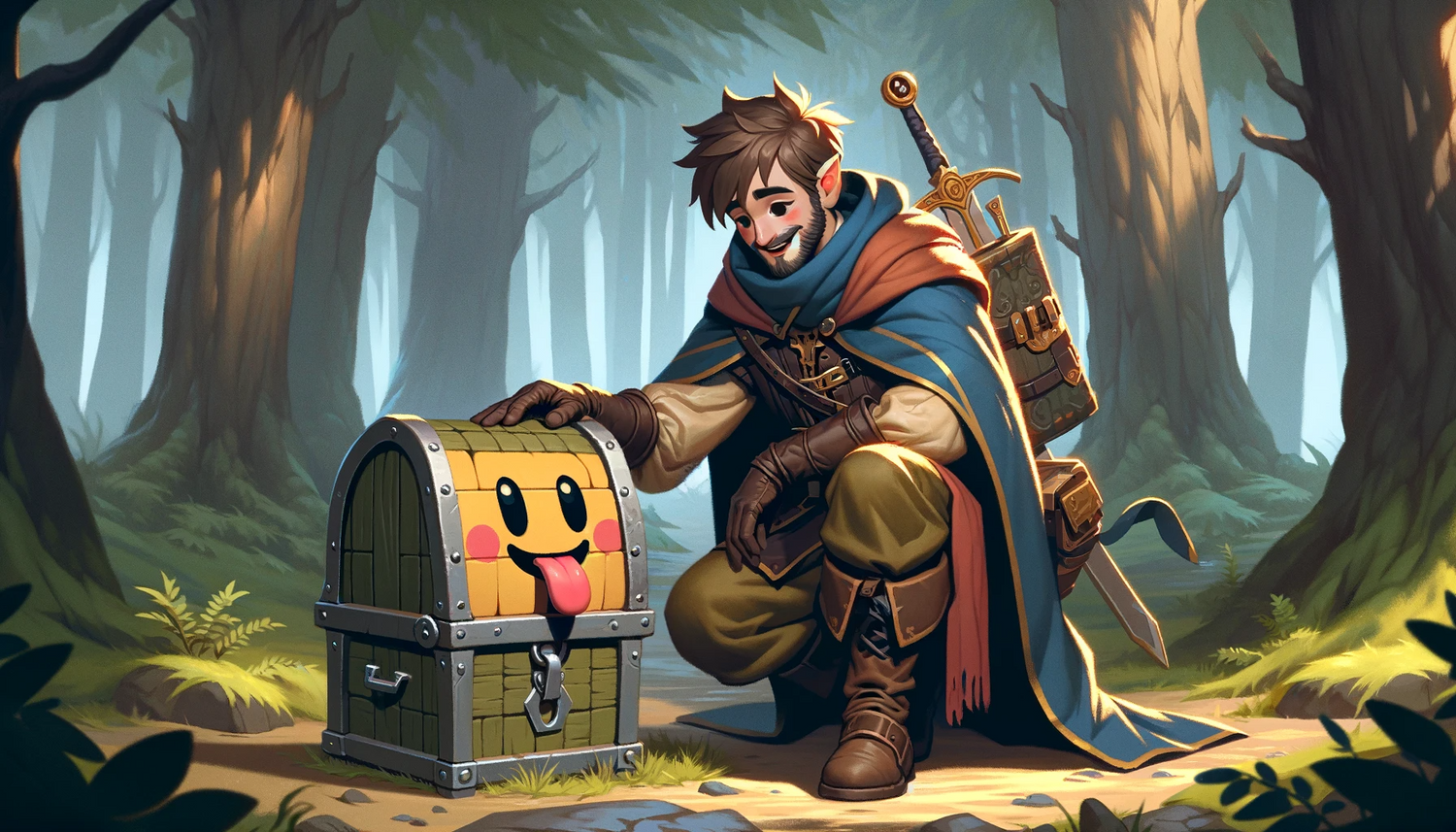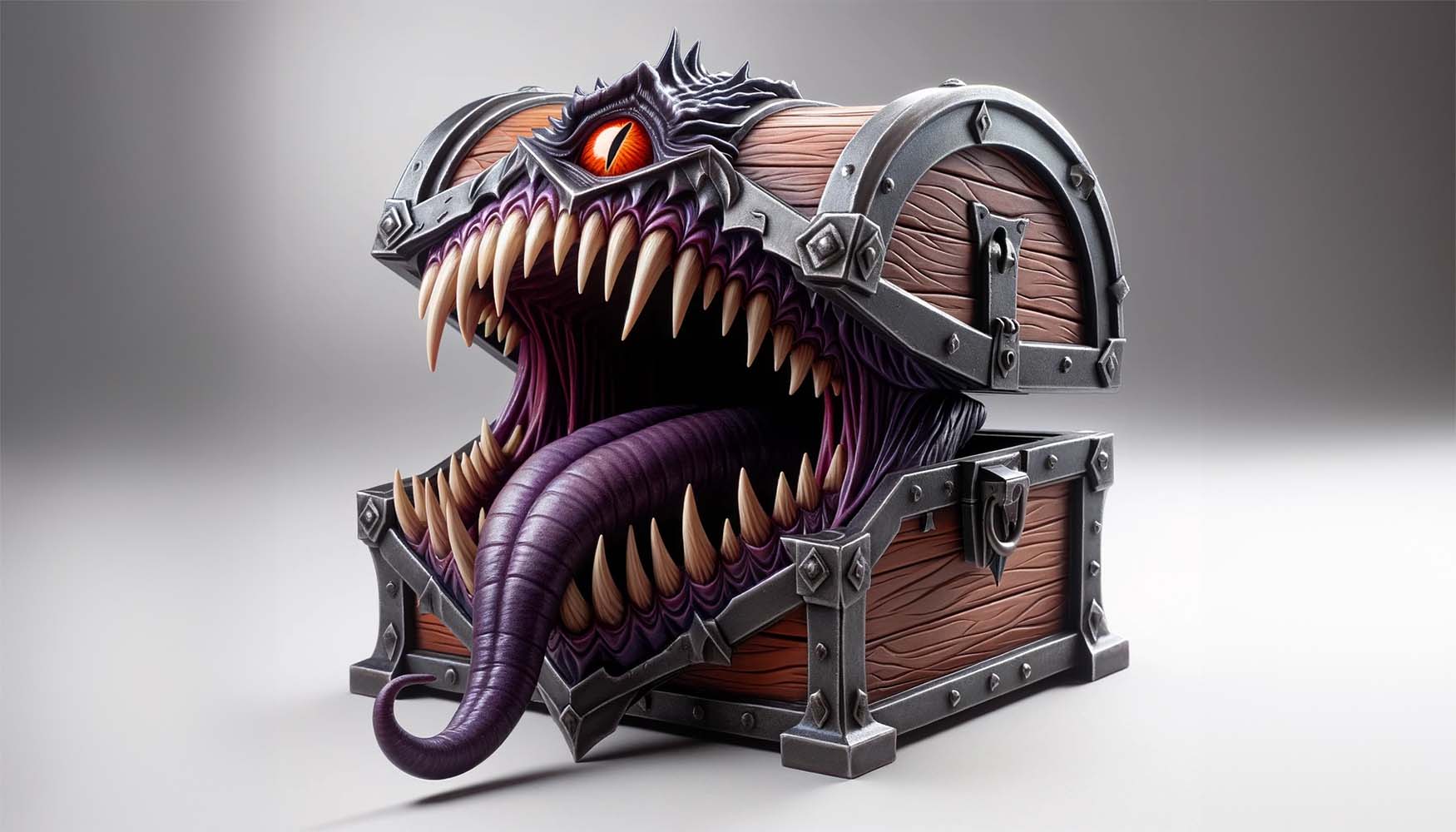In the diverse universe of Dungeons & Dragons (D&D), the concept of keeping a mimic as a pet challenges traditional gameplay, offering a blend of intrigue and creativity. These shape-shifting entities, known for their deceptive appearances, can transform from mere adversaries into fascinating companions. This article explores the intriguing possibility of taming a mimic, discussing how it can uniquely enhance your D&D experience, from game mechanics to narrative integration.
Table of Contents
- Mimics in D&D Lore
- Game Mechanics of a Mimic Companion
- Role-Playing with a Mimic Pet
- Challenges and Rewards of Having a Mimic Pet in D&D
- Crafting Your Pet Mimic's Story
Mimics in D&D Lore

In the world of Dungeons & Dragons, mimics are enigmatic creatures that defy expectations. At first glance, they might appear as ordinary objects — chests brimming with treasure, innocuous pieces of furniture, or even doors leading to the next room. This deceptive appearance is a mimic's primary weapon, luring in adventurers before revealing their true, often menacing nature.
Originating from the depths of D&D lore, mimics were created by wizards as guardians for their treasures. Over time, these magical beings evolved, gaining sentience and a unique ability to blend into their surroundings. A mimic's anatomy is fascinating; it can reshape its fibrous body to mimic almost any inanimate object. This shape-shifting ability is coupled with an adhesive substance, allowing them to hold fast to both their disguises and their prey.
Mimics communicate through telepathy and are more intelligent than one might expect. They possess a basic understanding of the languages and behaviors of those they aim to deceive. This intelligence, however, does not necessarily make them evil. Like any creature in D&D, a mimic's alignment can vary, offering a range of interactions beyond the typical monster encounter.
In your campaign, encountering a mimic presents a unique challenge and opportunity. As adversaries, they bring an element of surprise and caution, reminding players that not all treasures are as they appear. However, the idea of a mimic as a companion opens up new avenues for storytelling and gameplay. Imagine a mimic evolving from a simple chest to a more complex form, like a loyal shield or a mischievous ally, bringing a mix of humor, utility, and unpredictability to your adventures.
Mimics in D&D serve as a reminder of the game's boundless creativity. Whether as foes or friends, they add depth and surprise to the storytelling, making them a beloved part of the D&D universe.
Game Mechanics of a Mimic Companion
Integrating a mimic pet into your Dungeons & Dragons campaign requires thoughtful consideration of the game's mechanics. A mimic pet isn't just a quirky companion; it can significantly impact gameplay, offering both challenges and advantages.
- Mimic Stats and Abilities: First, define your mimic's basic stats. Use the standard mimic stats from the Monster Manual as a starting point, adjusting for balance as needed. Mimics are known for their shape-shifting ability, adhesive trait, and potent bite attack. However, as a pet, certain abilities might need to be scaled down to maintain fairness.
- Taming Process: Introducing a mimic pet should involve a taming process, adding a layer of realism and challenge. This could be achieved through a series of skill checks (like Animal Handling or Arcana) or a specific quest to gain the mimic's trust.
- Gameplay Integration: The mimic can serve multiple roles: as a guardian of the party's treasure, a deceptive tool for ambushes, or even as a problem-solver, using its shape-shifting to overcome obstacles. Its abilities should be leveraged in a way that encourages creative solutions rather than overpowering challenges.
- Level Progression: Consider how your mimic might grow with the party. Perhaps it gains new forms or abilities as it levels up, or its bond with the party strengthens, unlocking new synergies and tactics.
- Limitations and Balance: It's crucial to ensure that having a mimic pet doesn't disrupt the game's balance. Set clear limitations on its abilities, and ensure that its presence doesn't overshadow other players' contributions to the campaign.
By carefully considering these aspects, a mimic pet can become a memorable and integral part of your D&D campaign, enriching the gameplay experience without unbalancing it.
Role-Playing with a Mimic Pet

Credit for the image to: GM Binder - https://www.gmbinder.com/
Incorporating a mimic pet into your Dungeons & Dragons campaign offers exciting role-playing opportunities. A mimic's unique abilities and personality can add depth and humor to your adventures.
- Developing Personality: Give your mimic pet a distinct personality. Is it mischievous, shy, or loyal? Does it communicate through simple gestures, sounds, or telepathy? This personality will guide how it interacts with the party and NPCs.
- Mimic in Action: Imagine the mimic transforming into various objects for strategic advantages. It could become a chair to eavesdrop on conversations, a ladder to reach high places, or even a duplicate of an important key. The possibilities are endless and can lead to creative problem-solving scenarios.
- Bonding with the Party: How does the party react to their new companion? A mimic pet can be a source of bonding, leading to shared laughs or tense moments. Perhaps the mimic saves a party member from danger, earning trust and strengthening its bond with the group.
- Ethical Dilemmas: The presence of a mimic can introduce moral questions. Is it right to use the mimic for deception? How does the party ensure the mimic is treated fairly and not just as a tool? These dilemmas can lead to compelling character development and discussions within the party.
- Impact on Storytelling: A mimic pet can influence the direction of your campaign's narrative. Maybe it has a mysterious origin that ties into a larger plot, or its abilities unlock previously inaccessible paths or secrets.
Role-playing with a mimic pet in D&D opens up a realm of imaginative possibilities, enhancing the storytelling and the overall gaming experience. It encourages players to think outside the box and engage with the game world in novel ways.
Challenges and Rewards of Having a Mimic Pet in D&D
Introducing a mimic pet into your Dungeons & Dragons campaign can bring both challenges and rewards, adding complexity and richness to the gaming experience.
Challenges:
-
Unpredictability: A mimic's shape-shifting nature can lead to unexpected situations, requiring players to adapt quickly.
-
Trust Issues: Given their deceptive origins, mimics can create interesting trust dynamics within the party and with NPCs.
- Management: Handling a mimic, especially in public or sensitive situations, can be a delicate task, adding layers to strategic planning.
Rewards:
-
Creative Problem-Solving: Mimics can offer unconventional solutions to obstacles, encouraging players to think outside the box.
-
Unique Ally: As a rare and versatile companion, a mimic adds a unique element to the party's dynamics and capabilities.
- Storytelling Opportunities: The presence of a mimic can enrich the narrative, creating memorable moments and deepening character development.
Overall, a mimic pet can be a delightful addition to your D&D adventures, offering a mix of challenges and rewards that enhance both the gameplay and the storytelling aspects of your campaign.
Crafting Your Pet Mimic's Story
Integrating a mimic pet into your Dungeons & Dragons campaign is not just about adding a unique creature; it's about weaving a new character into your story. Here's how you can craft a compelling narrative for your mimic:
-
Origin Story: Begin with how the mimic joined the party. Was it discovered in a dungeon, inherited from a mysterious benefactor, or encountered in an unusual situation? This backstory adds depth to its presence.
-
Evolving Relationship: Develop the relationship between the mimic and the party over time. How does it grow from a curious oddity to a trusted companion? This evolution can be a source of both conflict and bonding.
-
Personality Traits: Give your mimic distinct traits. Does it have quirks, preferences, or fears? How does it react to different situations? A well-defined personality makes the mimic more engaging.
-
Role in the Party: Define the mimic's role. Is it a guardian, a scout, or a source of comic relief? Its role can change based on the party's needs and the mimic's development.
- Narrative Impact: Consider how the mimic influences the campaign's narrative. Does it have a secret that ties into the main plot? Can it shape-shift into something pivotal at a critical moment?
By thoughtfully crafting your mimic's story, you turn it from a simple pet into a memorable character that enriches your D&D adventures.


